[NOTE: To enlarge any image, right click it and choose “Open image in New Tab” or similar.
I’m up early at Fazenda dos Cordeiros because this morning I’m going into the field to see the golden lion tamarin (mico leão dourado). I’m packed and out of my room in plenty of time, walk the few steps to the main house, and find a sumptuous breakfast awaiting — almost everything homemade or homegrown.
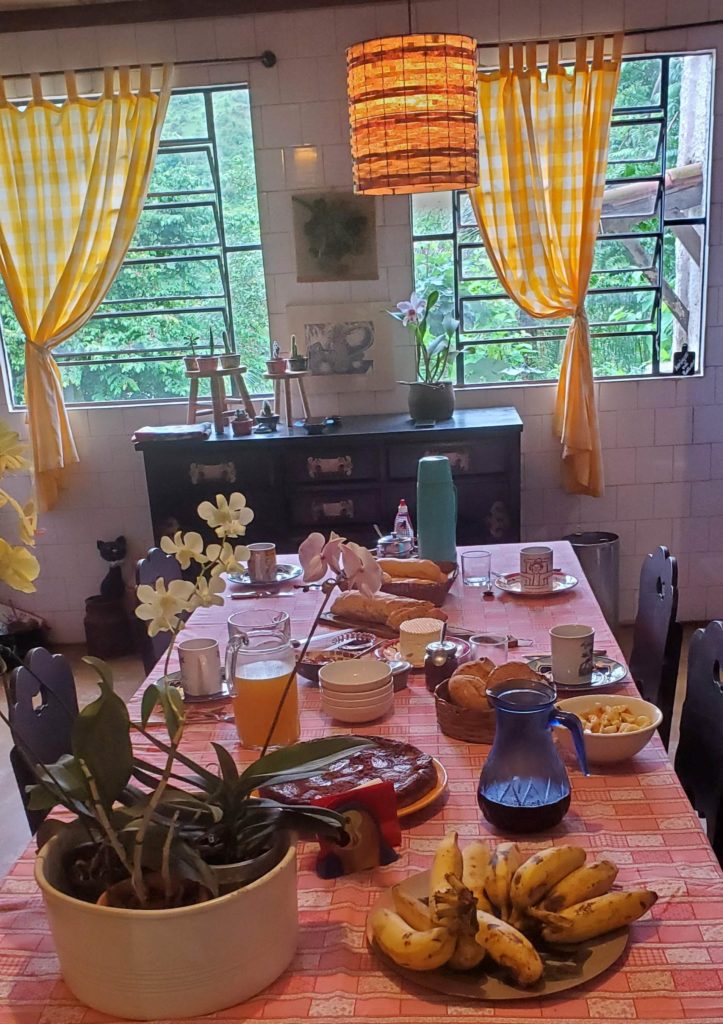
After a leisurely meal with Ana Beatriz and her family, I make the 10 minute drive back down the road to the Golden Lion Tamarin Association’s (AMLD) private reserve. Already gearing up as I arrive are several AMLD staff members and a two-person Swedish news crew. They are the reason today’s excursion is open to me. Normally a group less than four is charged a substantial minimum fee. I don’t know if AMLD waived the fee for the Swedes or if their network anted up, but I’m only paying the normal per person charge.
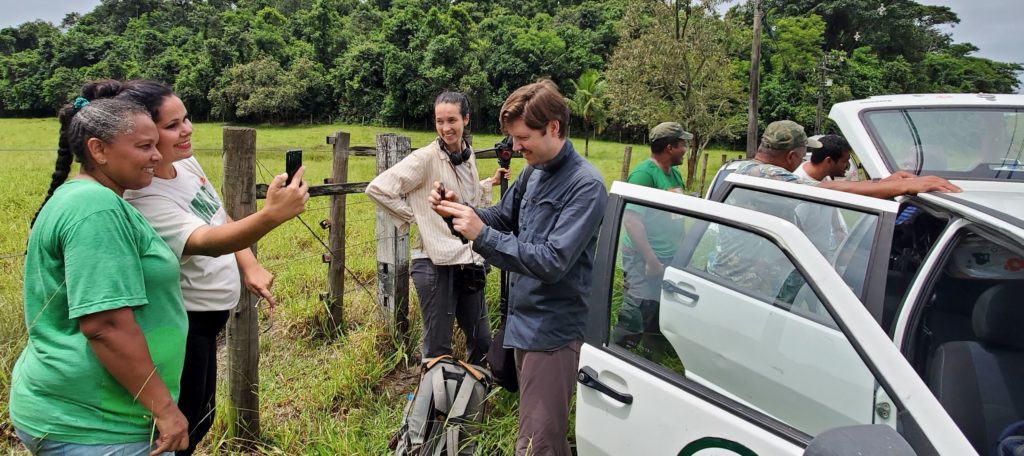
We set off into the woods and fields with a staff member leading the way holding a radio tracking antenna.
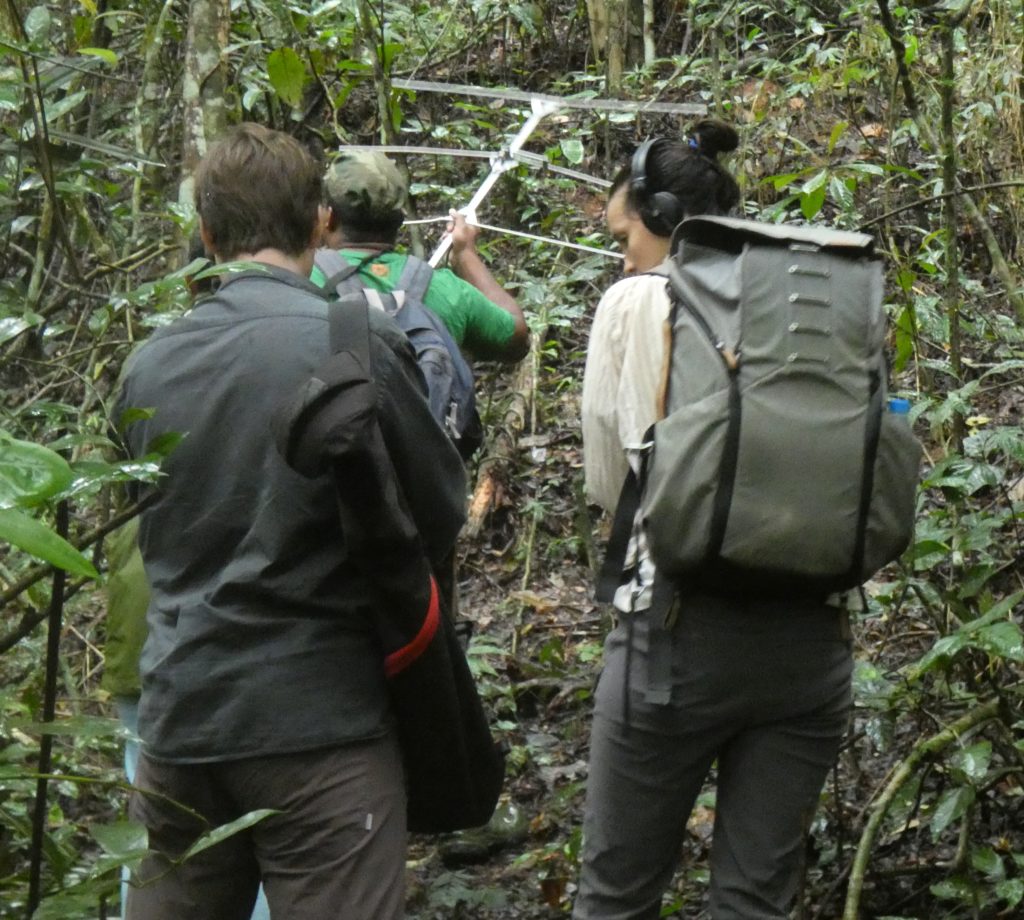
AMLD has collared at least one member of each family group so they can be more easily monitored. After a fruitless initial steep and slippery climb through the forest, we turn back and head for other wooded areas across a very wet former pasture.

At the far end of the property one or two tamarins (micos) appear. Another staff member places a bunch of bananas in the crotch of a tree and within ten minutes, we are surrounded by dozens of bright orange micos, opening bananas, staring down at us, and lolling on branches just above our heads. It’s an incredibly intimate encounter and all three of the guests are awestruck by their beauty and behavior. The Swedish producer and cameraperson stick with their work, filming the micos constantly. I discover to my dismay that something is wrong with my camera, probably some errant setting, that is putting a bluish cast over every photo and preventing proper focus. Because of intermittent rain (I have the camera protected with a plastic bag) and the short time we have with the micos, I decide not to start a research project on the failures. Instead I shoot the best I can with both camera and phone. After all, seeing the micos is the unique adventure. Even without many photographs, I’m still having the experience.
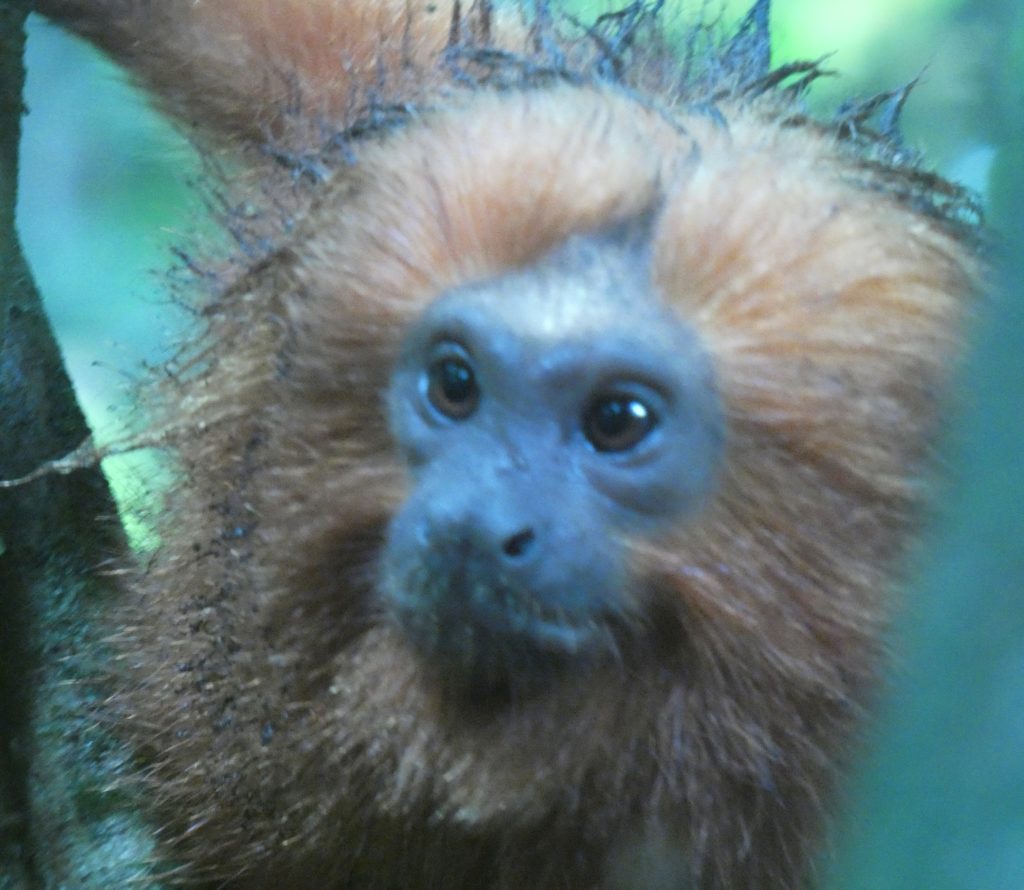

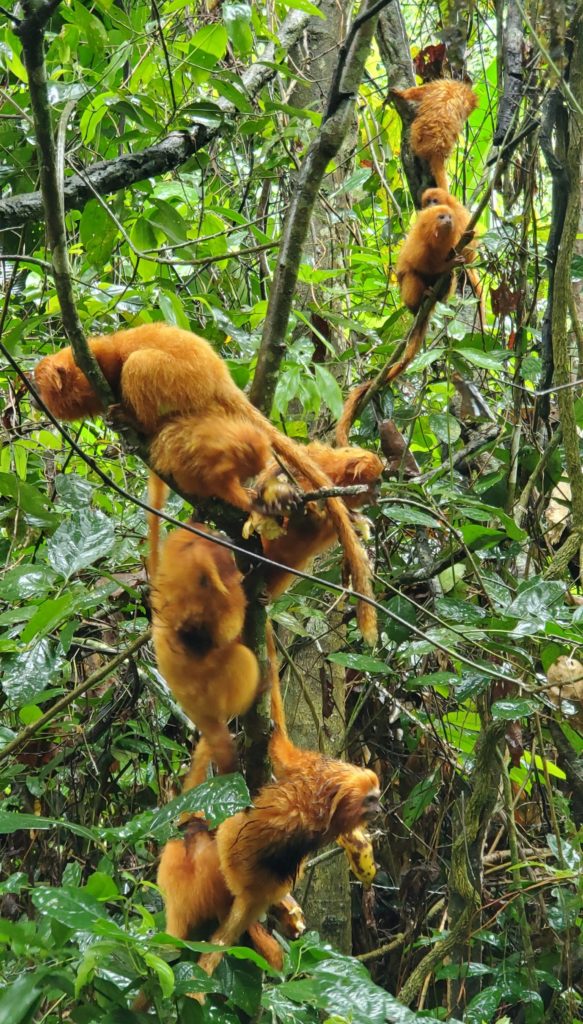
After a half hour or so, we leave the micos to their meal and the Swedes film some interviews with the staff. Then we all go sloshing back across the soggy fields to the road. The producer tells me the two of them, based in Buenos Aires, Argentina, cover South America for Sweden’s main evening news program and that this day’s work will probably be presented as a 3 minute story. By 11 AM or so, we’re all taking off in different directions, mission accomplished.
Still awestruck from seeing such unique animals up close, it takes an effort of will to focus on my driving. My tentative goal for today is a hostel in a coastal town, but thanks to today’s early start and the muddy roads keeping me on the toll highways, I get there much too early in the day to consider stopping yet. Just beyond the town is Jurubatiba, a coastal national park that, on the map at least, looks like an interesting area with a remote beach road. There’s one park entrance near me, but it turns out to be a stub road used only for local beach access. The map shows a few routes to the longer through road along the beach, so I work my way around to the first of these. Leaving the highway on small, sand roads, I know the chances of having to turn back are substantial. Sure enough, the muddy stretches get worse until I face one that I don’t want to risk and pull one of my “am I going to make it” U-turns and blast my way uphill back to the highway. The second access still beckons so I try that one. Less mud this time, but I’m clearly going through ranch property.

After dodging farm equipment on the one lane road, I reach, about 3 miles in, a locked ranch gate. Another backtrack to the highway and when I pass the third mapped access, I don’t even try it. The car, as usual on days like this, is completely covered in dried mud and looks like something out of a trans-Africa road rally.
I progress up the coast on slightly more reliable roads until it gets to the hour where I want to stop for the day. My route goes through a small beach strip town, were I’m confident I’ll find affordable lodging. Shortly before I arrive, my vaguely paved route turns into a sand dune and a detour sign forces me inland on an obviously provisional road. Apparently an ocean storm destroyed a long stretch of the original highway. The detour is really primitive and finally deposits me in a substantial community arrayed along the beach. Clearly, the way I entered cannot be the main access to a town of this size.
I find another amazingly good value, US$16 for a big, modern room with air conditioning and a large balcony overlooking the ocean beach.

I go back out to sightsee and notice a fleet of fishing boats, quite large. Rather than being docked in a harbor, they’re all beached high up on the sand. By their haphazard arrangement, I conclude that each must have been hauled out of the surf by heavy equipment.
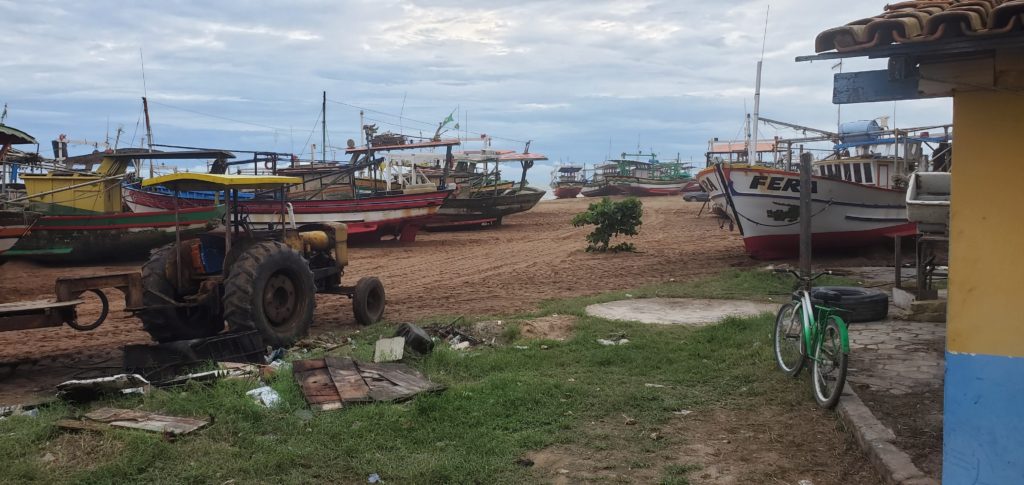
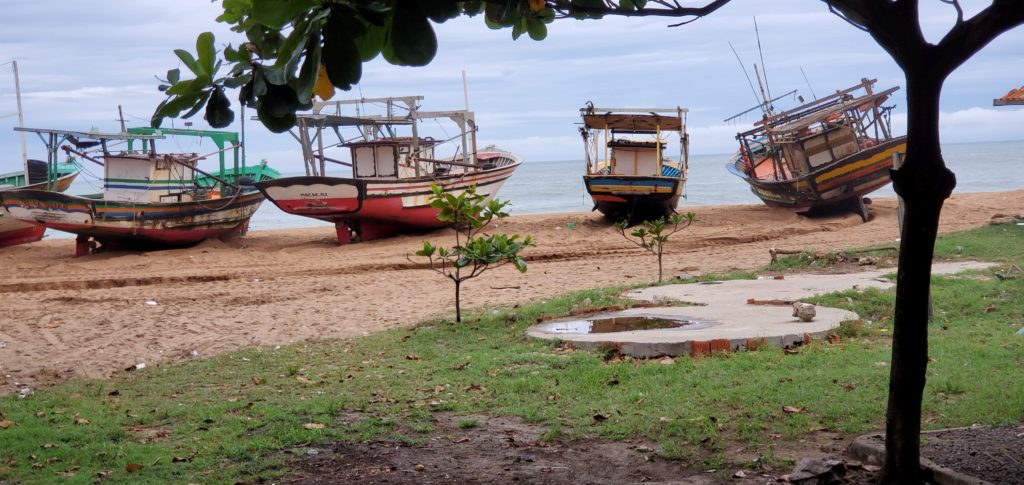
Getting them into the water again must be quite an operation as there seems no option but to shove them with brute force back down the steep sandy beach into a substantial breaking surf. This seems like it would be a technique of last resort. I’ve seen beach based fishing elsewhere, but only with smaller boats that can be muscled around with 2-6 people. That technique won’t work here.
Along the beachfront road, fisherman are processing their day’s catch in what look like simple cooperative facilities, little more than shade, work table, and running water. The men and women are gutting, filleting, and packing in ice.
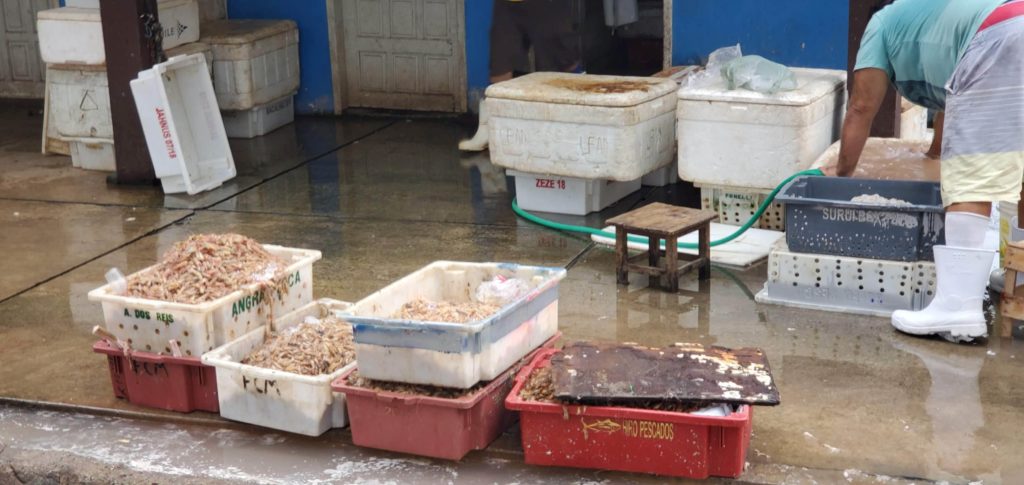
Anywhere where there’s commercial fishing, ice vending is a major occupation and I see signs advertising “gelo” all over town. As the afternoon latens, large passenger helicopters start coming in from the ocean. At first I think “military” but it dawns on me that this is the region where oil was discovered in the 1990s so there must be offshore rigs over the horizon.
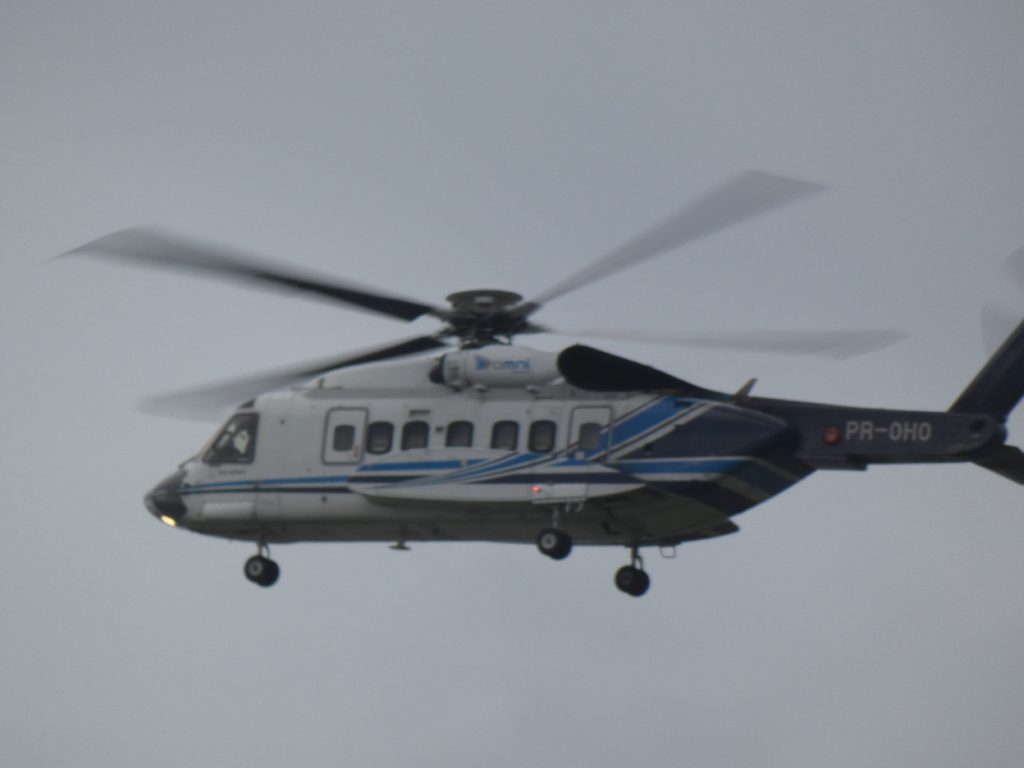
I walk around town looking for decent food but it’s afternoon so most restaurants are closed. If I’m going to eat something other than Brasilian pizza, Brasilian hamburger, or Brasilian pastry, I have to wait several hours. I go back to the room, crank up the air conditioner, and attempt to read. As always, I’m out in ten minutes and the next time I wake, it’s midnight and all the restaurants are closed. Well, breakfast will be available downstairs soon enough.
Next post: http://blog.bucksvsbytes.com/2020/03/09/south-america-by-subaru-20-02-13-car-trouble/







